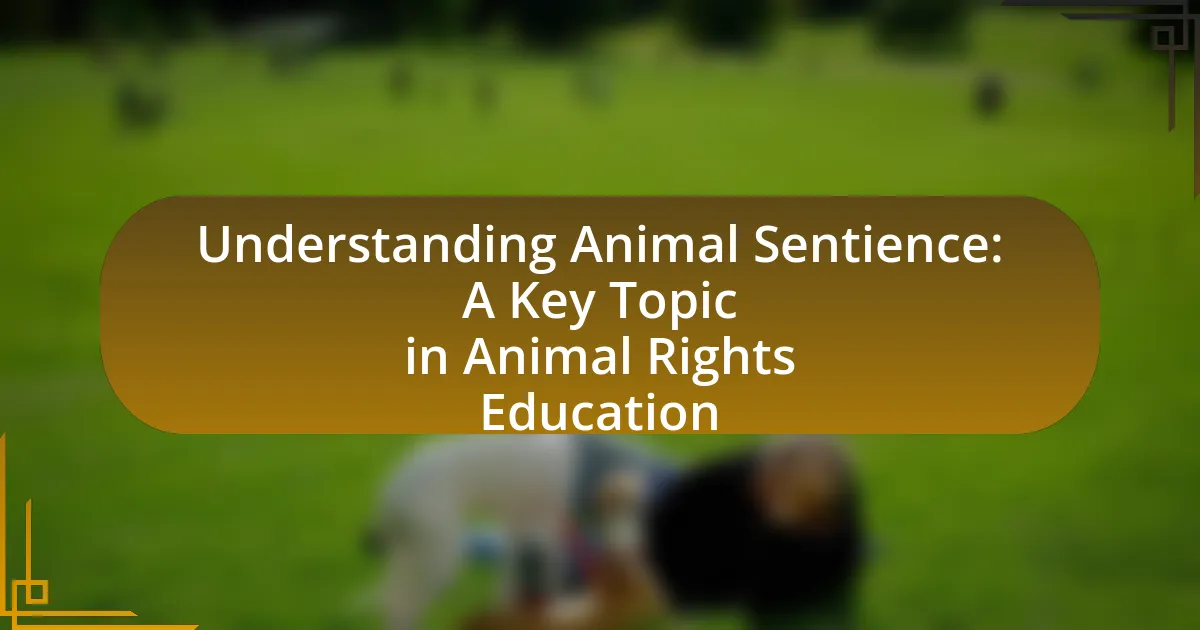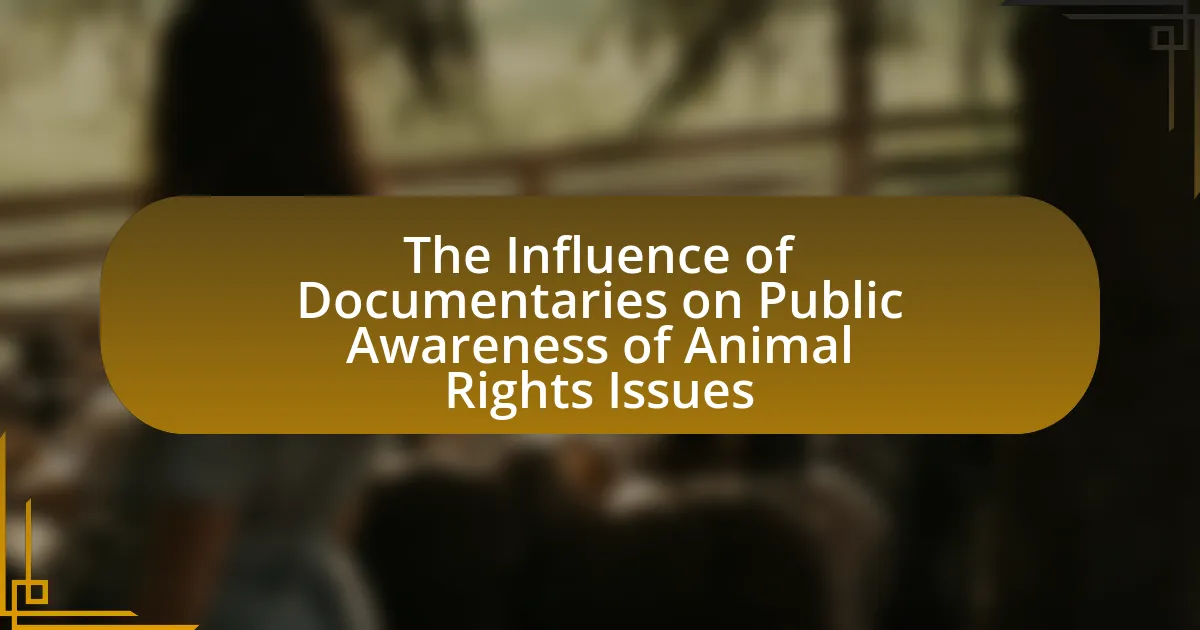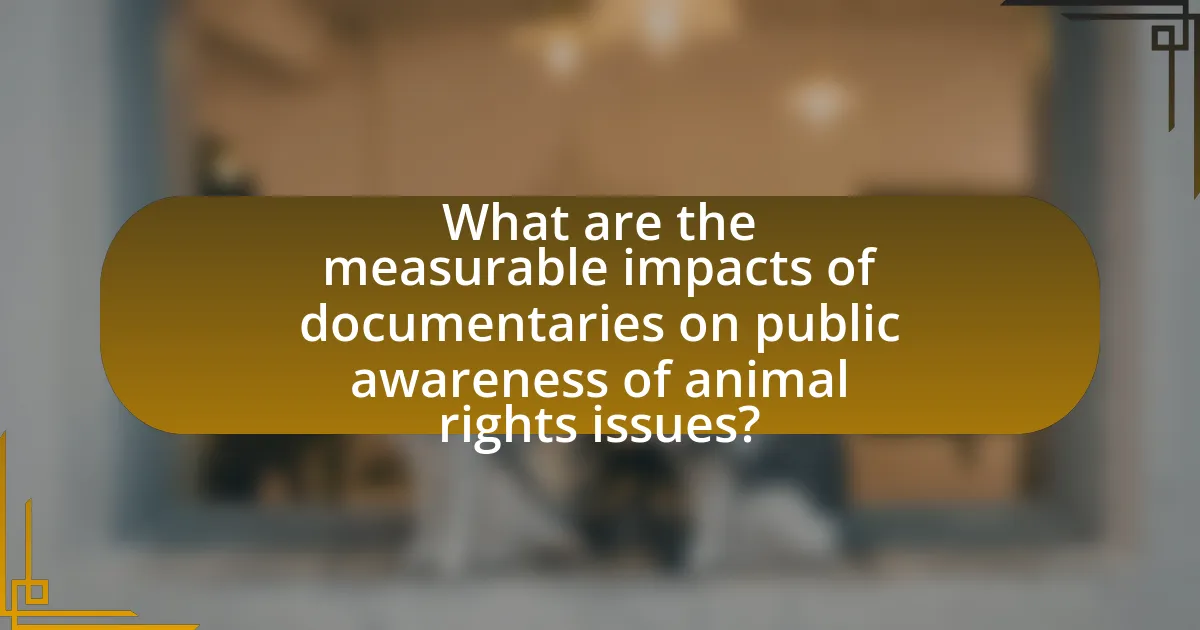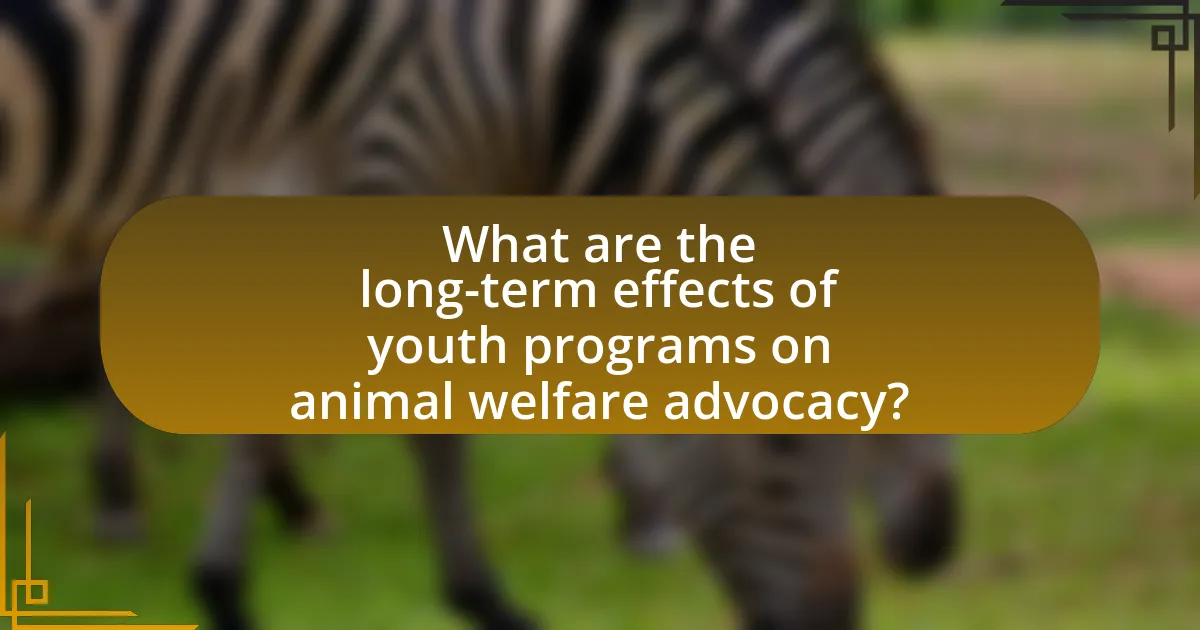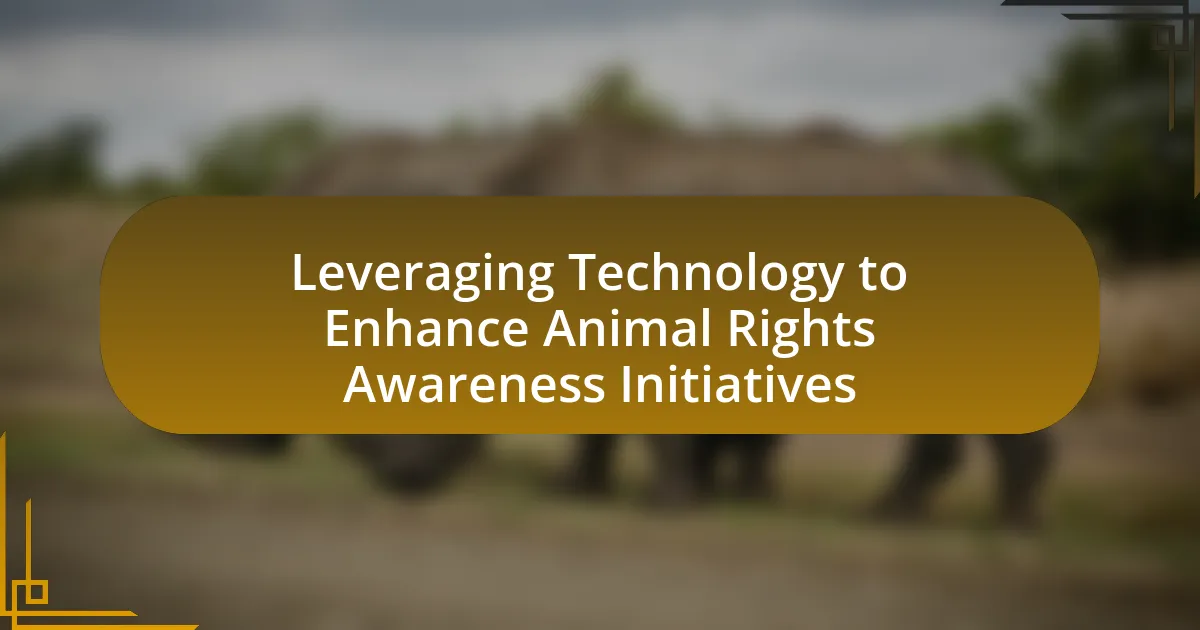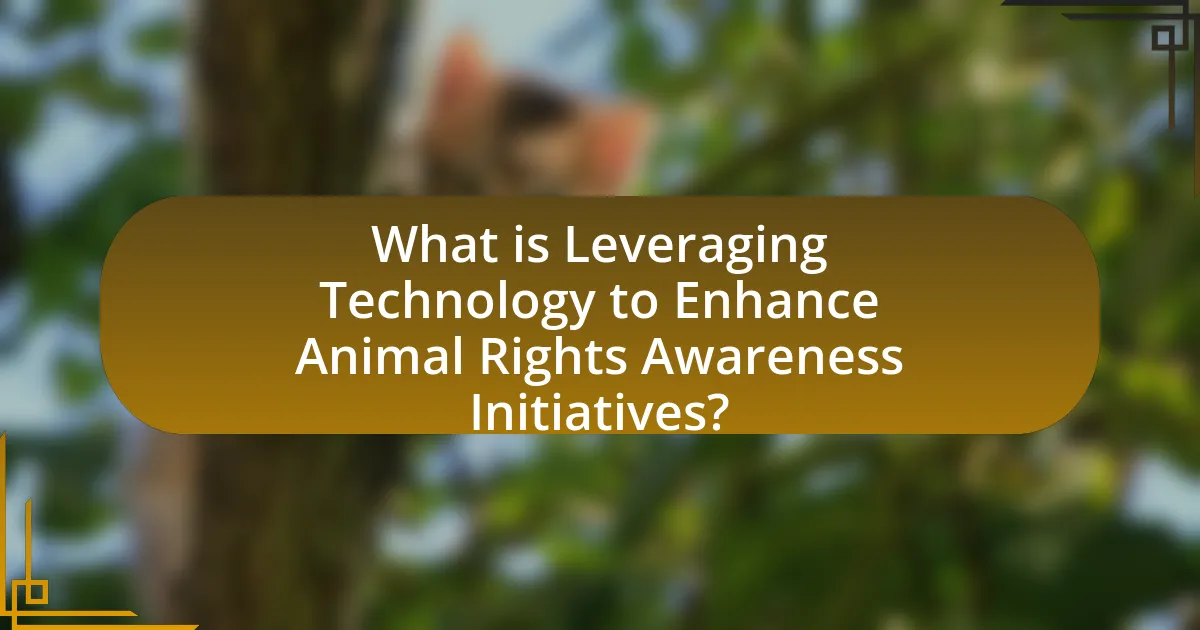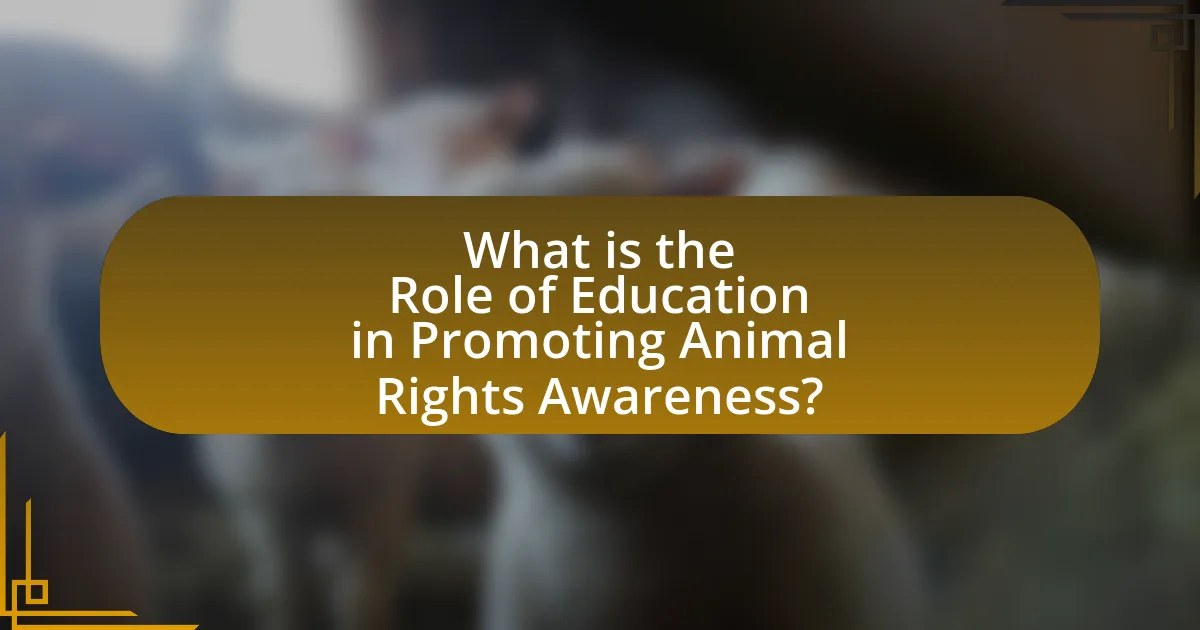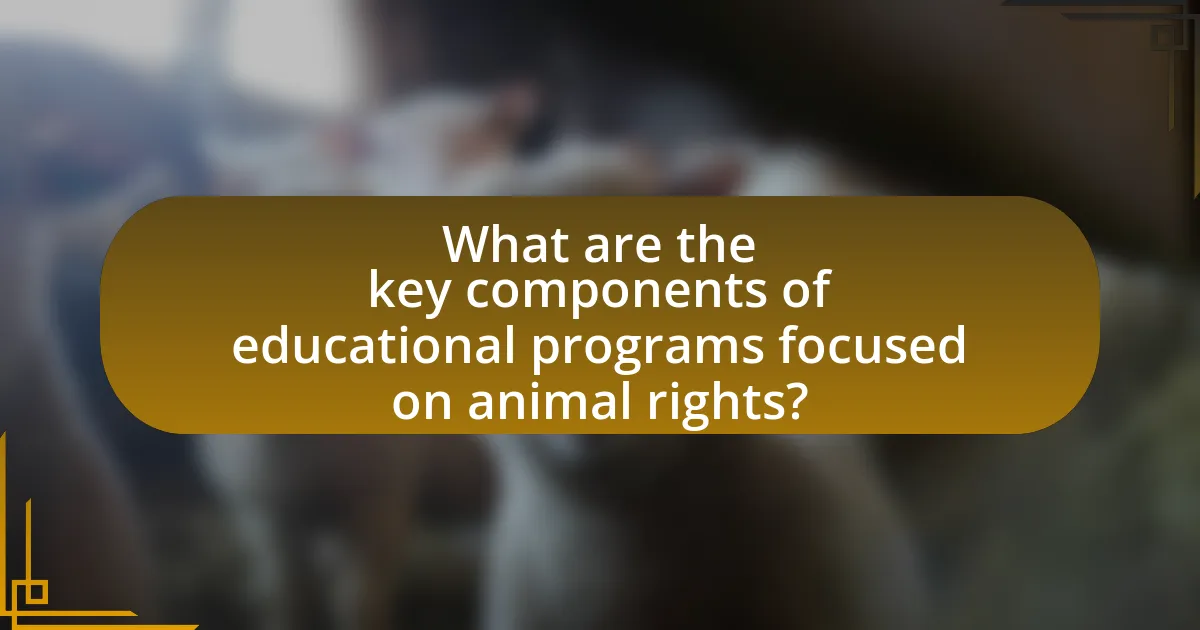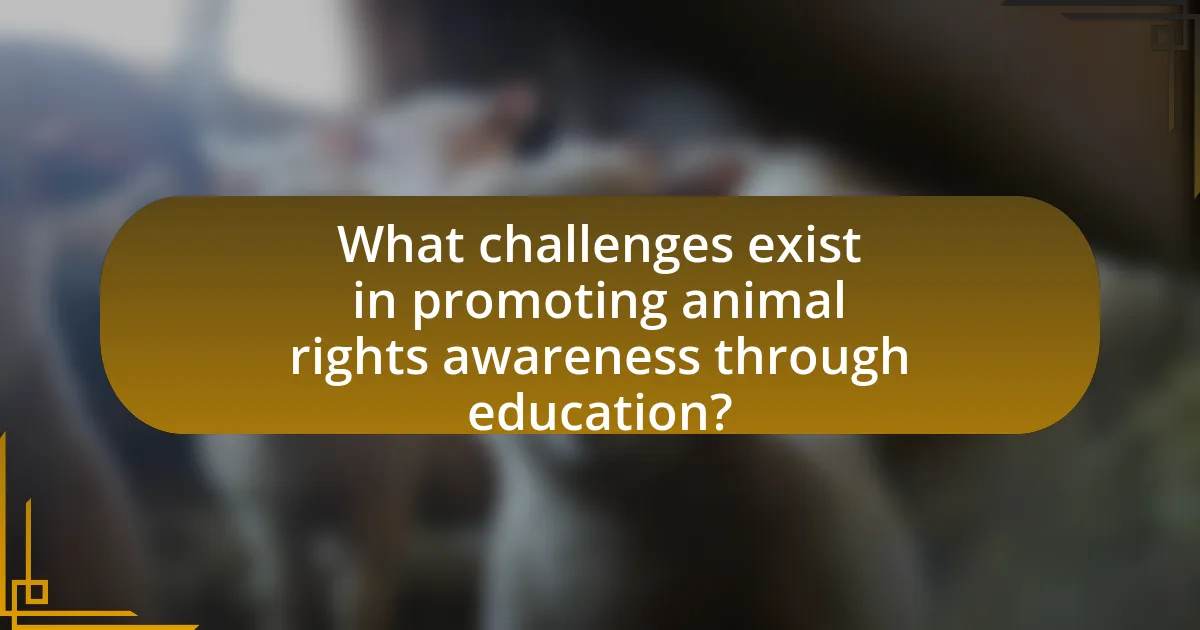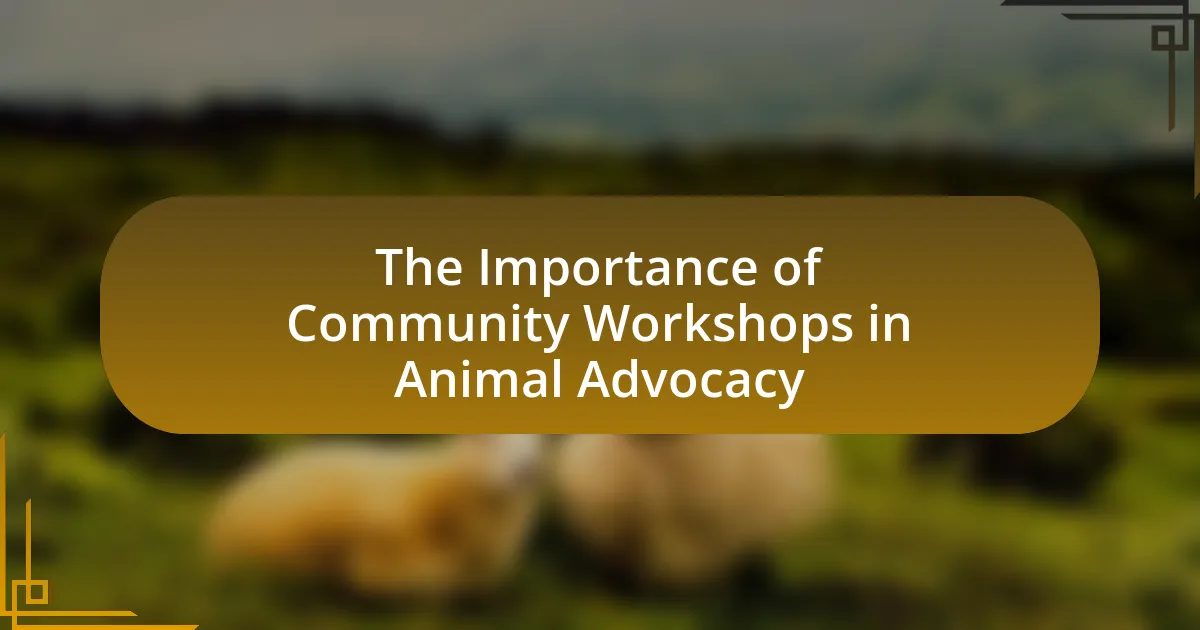Animal sentience is defined as the capacity of animals to have subjective experiences, including feelings, perceptions, and emotions. This article explores the scientific evidence supporting animal sentience, highlighting neurological studies that demonstrate the ability of various species, such as mammals, birds, and some invertebrates, to experience pain and emotions. It examines the implications of recognizing animal sentience for animal rights education, public policy, and ethical considerations, as well as the cultural perceptions that influence attitudes towards animal welfare. Additionally, the article discusses methods for measuring sentience, the challenges faced in assessment, and the role of advocacy in promoting awareness and legal protections for sentient beings.

What is Animal Sentience?
Animal sentience refers to the capacity of animals to have subjective experiences, including feelings, perceptions, and emotions. This concept is supported by scientific evidence indicating that many animals possess complex nervous systems and brain structures that enable them to experience pain, pleasure, and a range of emotions similar to humans. Research has shown that species such as mammals, birds, and even some invertebrates exhibit behaviors that suggest awareness and emotional responses, reinforcing the understanding that animal sentience is a significant aspect of animal welfare and rights.
How is animal sentience defined in the context of animal rights?
Animal sentience is defined in the context of animal rights as the capacity of animals to experience feelings, emotions, and subjective experiences. This definition is crucial because it underpins the ethical consideration that animals deserve moral consideration and protection from suffering. Scientific studies, such as those conducted by the Cambridge Declaration on Consciousness in 2012, affirm that many non-human animals possess the neurological substrates necessary for consciousness, thereby reinforcing the argument for their rights and welfare.
What scientific evidence supports the concept of animal sentience?
Scientific evidence supporting the concept of animal sentience includes neurological studies demonstrating that many animals possess complex brains capable of processing emotions and pain. Research by neuroscientists, such as those conducted by Dr. Gregory Berns at Emory University, shows that dogs exhibit brain activity similar to humans when exposed to emotional stimuli, indicating an ability to feel emotions. Additionally, studies on octopuses reveal that they have a sophisticated nervous system and exhibit behaviors suggesting they experience pain and distress, as documented in the research published in the journal “Animal Sentience” by Dr. Jennifer Mather. Furthermore, the presence of pain receptors and the ability to learn from experiences in various species, including mammals, birds, and even some invertebrates, further supports the notion that many animals are sentient beings capable of experiencing a range of emotions and sensations.
How do different cultures perceive animal sentience?
Different cultures perceive animal sentience in varied ways, influenced by religious beliefs, philosophical views, and societal norms. For instance, in Western cultures, particularly influenced by scientific perspectives, many recognize animals as sentient beings capable of experiencing pain and emotions, leading to animal welfare laws. In contrast, some Indigenous cultures view animals as possessing spirits and intrinsic value, emphasizing a deep connection and respect for all living beings. Additionally, Eastern philosophies, such as Buddhism, advocate for compassion towards animals, recognizing their capacity for suffering. These cultural perspectives shape attitudes towards animal rights and welfare, as evidenced by varying legal protections and ethical considerations across different societies.
Why is understanding animal sentience important for animal rights education?
Understanding animal sentience is crucial for animal rights education because it establishes the moral and ethical basis for recognizing animals as beings capable of experiencing pain, pleasure, and emotions. This recognition compels society to consider the welfare of animals and informs policies and practices that protect their rights. Research indicates that many species, including mammals, birds, and even some invertebrates, exhibit behaviors suggesting sentience, such as seeking comfort, forming social bonds, and displaying distress in adverse conditions. For instance, studies by scientists like Dr. Jonathan Balcombe highlight that fish demonstrate complex behaviors indicative of sentience, challenging traditional views that often dismiss their capacity for suffering. Thus, understanding animal sentience not only enriches animal rights education but also drives advocacy for humane treatment and legal protections for all sentient beings.
What role does animal sentience play in ethical considerations?
Animal sentience plays a crucial role in ethical considerations by establishing that animals have the capacity to experience pain, pleasure, and emotions, which necessitates moral obligations towards their welfare. This understanding influences ethical frameworks, such as utilitarianism and rights-based approaches, which argue that the ability to suffer or experience joy grants animals intrinsic value and rights. Research, such as the Cambridge Declaration on Consciousness, asserts that many non-human animals possess the neural substrates necessary for consciousness, reinforcing the ethical imperative to consider their interests in decision-making processes.
How does animal sentience influence public policy on animal welfare?
Animal sentience significantly influences public policy on animal welfare by shaping legal frameworks that recognize the capacity of animals to experience pain and emotions. This recognition leads to the implementation of more stringent regulations aimed at protecting animals from cruelty and ensuring their well-being. For instance, the European Union’s Treaty of Lisbon, which came into effect in 2009, explicitly acknowledges animals as sentient beings, prompting member states to enhance animal welfare standards. Research indicates that public awareness of animal sentience correlates with increased support for animal welfare legislation, as seen in surveys where a majority of respondents advocate for stronger protections based on the understanding that animals can suffer.

How do we measure animal sentience?
Animal sentience is measured through behavioral observations, neurological studies, and physiological responses. Behavioral observations assess how animals respond to stimuli, indicating their capacity for feelings such as pain and pleasure. Neurological studies, including brain imaging, reveal the complexity of animal brains and their capacity for emotional processing. Physiological responses, such as stress hormone levels, provide measurable indicators of an animal’s emotional state. Research, such as that conducted by the Cambridge Declaration on Consciousness, supports the notion that many non-human animals possess the neural substrates necessary for consciousness, further validating these measurement methods.
What methods are used to assess sentience in animals?
Methods used to assess sentience in animals include behavioral observations, neurobiological assessments, and cognitive testing. Behavioral observations involve analyzing responses to stimuli, such as pain or social interactions, to infer emotional states. Neurobiological assessments examine brain structures and functions associated with consciousness and emotional processing, such as the presence of pain receptors and neural pathways. Cognitive testing evaluates problem-solving abilities, learning capacity, and self-awareness, which are indicators of higher cognitive functions linked to sentience. These methods collectively provide a comprehensive understanding of animal sentience, supported by research demonstrating that many species exhibit complex behaviors and emotional responses indicative of sentience.
How do behavioral indicators reflect animal sentience?
Behavioral indicators reflect animal sentience by demonstrating the capacity for subjective experiences, emotions, and awareness in animals. For instance, behaviors such as play, problem-solving, and social interactions suggest cognitive complexity and emotional depth, which are hallmarks of sentience. Research has shown that animals exhibit stress responses, empathy, and even mourning behaviors, indicating an awareness of their environment and the feelings of others. Studies, such as those by Paul Ekman on emotional expressions in animals, provide evidence that certain behaviors correlate with emotional states, reinforcing the notion that these indicators are reliable reflections of sentience.
What role does neurobiology play in understanding animal sentience?
Neurobiology plays a crucial role in understanding animal sentience by providing insights into the neural mechanisms underlying consciousness and emotional experiences in animals. Research has shown that certain brain structures, such as the neocortex and limbic system, are involved in processing emotions and complex behaviors, indicating that many animals possess the neurological capacity for sentience. For example, studies on mammals and birds have demonstrated that they exhibit behaviors consistent with feelings of pain, pleasure, and social bonding, supported by the presence of pain receptors and neurochemical responses similar to those in humans. This evidence underscores the importance of neurobiological research in validating the existence of sentience across various species, thereby informing ethical considerations in animal rights education.
Why is it challenging to measure animal sentience?
Measuring animal sentience is challenging due to the complexity of defining and assessing subjective experiences in non-human species. Unlike humans, animals cannot verbally communicate their feelings or thoughts, making it difficult to establish a clear understanding of their consciousness. Additionally, the diverse range of species and their varying neurological structures complicate the development of standardized assessment tools. Research indicates that behaviors indicative of sentience, such as pain perception and emotional responses, can manifest differently across species, further complicating measurement efforts. For instance, a study published in “Animal Sentience” by David M. B. Hall and colleagues highlights the variability in pain responses among different animal taxa, underscoring the need for tailored approaches to evaluate sentience accurately.
What are the limitations of current research methods?
Current research methods in understanding animal sentience face several limitations, including ethical constraints, methodological challenges, and a lack of standardized measures. Ethical constraints often restrict the types of experiments that can be conducted on animals, limiting the ability to gather comprehensive data on their cognitive and emotional experiences. Methodological challenges arise from the difficulty in interpreting animal behavior accurately, as behaviors may not directly correlate with sentience. Additionally, the absence of standardized measures for assessing sentience across different species complicates comparisons and generalizations. These limitations hinder the advancement of knowledge in the field and the development of effective animal rights education.
How do species differences complicate the assessment of sentience?
Species differences complicate the assessment of sentience by introducing variability in cognitive abilities, emotional responses, and sensory perceptions across different animals. For instance, mammals, birds, and cephalopods exhibit distinct neural architectures that influence how they experience pain and emotions, making it challenging to apply a uniform standard for sentience assessment. Research indicates that species such as octopuses demonstrate complex problem-solving skills and emotional behaviors, which differ significantly from those of mammals, highlighting the need for species-specific criteria in evaluating sentience. This complexity necessitates a nuanced approach to understanding sentience that accounts for the unique biological and behavioral traits of each species.

What implications does animal sentience have for society?
Animal sentience has significant implications for society, particularly in shaping ethical considerations and policies regarding animal welfare. Recognizing that animals can experience pain, pleasure, and emotions compels society to reassess its treatment of animals in various sectors, including agriculture, research, and entertainment. For instance, studies have shown that animals such as pigs and cows exhibit complex behaviors indicative of emotional states, which supports the argument for improved living conditions and humane treatment. Furthermore, the acknowledgment of animal sentience has led to legislative changes, such as the Animal Welfare Act in the United States, which aims to protect animals from suffering. This shift in understanding encourages a more compassionate society that values the well-being of all sentient beings, ultimately influencing consumer choices and promoting ethical practices across industries.
How does recognizing animal sentience affect animal rights legislation?
Recognizing animal sentience significantly influences animal rights legislation by providing a scientific basis for legal protections. When animals are acknowledged as sentient beings capable of experiencing pain and emotions, lawmakers are more likely to enact laws that safeguard their welfare. For instance, the European Union’s Treaty of Lisbon, which recognizes animals as sentient beings, has led to stronger animal welfare regulations across member states. This recognition prompts a shift in public perception and policy, encouraging the development of laws that prohibit cruelty and promote humane treatment, as seen in various countries that have updated their animal welfare statutes in response to growing awareness of sentience.
What changes have occurred in laws due to increased awareness of animal sentience?
Increased awareness of animal sentience has led to significant changes in laws, including the recognition of animals as sentient beings in legal frameworks. For instance, the European Union’s Treaty of Lisbon, enacted in 2009, explicitly acknowledges animals as sentient beings, influencing member states to enhance animal welfare legislation. Additionally, countries like New Zealand and Switzerland have amended their laws to reflect this understanding, implementing stricter regulations on animal treatment and welfare standards. These legal changes are supported by scientific research demonstrating that many animals experience pain, emotions, and social relationships, which has prompted lawmakers to prioritize animal welfare in legislation.
How do advocacy groups utilize the concept of animal sentience?
Advocacy groups utilize the concept of animal sentience to promote the ethical treatment of animals and influence legislation. By emphasizing that animals possess the capacity to feel pain, pleasure, and emotions, these groups argue for stronger animal welfare laws and practices. For instance, the Animal Welfare Act in the United States has been shaped by advocacy efforts that highlight the sentient nature of animals, leading to increased protections against cruelty and exploitation. Research, such as the 2012 study published in the journal “Animal Sentience,” supports the notion that many species experience complex emotional states, reinforcing the advocacy groups’ claims and objectives.
What can individuals do to support animal rights based on sentience?
Individuals can support animal rights based on sentience by advocating for policies that recognize and protect the welfare of sentient beings. This includes promoting legislation that bans practices causing unnecessary suffering, such as factory farming and animal testing. Research indicates that animals possess the capacity for pain and suffering, as demonstrated by studies showing similar neurological responses in humans and various animal species (Mason et al., 2007, “Animal Welfare: A Global Perspective”). Additionally, individuals can choose to adopt a plant-based diet, reducing demand for animal products and thereby decreasing the suffering of animals raised for food. Supporting organizations that focus on animal rights and education about sentience also contributes to broader societal change.
How can education about animal sentience influence consumer choices?
Education about animal sentience can significantly influence consumer choices by increasing awareness of the emotional and cognitive capacities of animals, leading to more ethical purchasing decisions. When consumers understand that animals experience pain, joy, and social bonds, they are more likely to seek out products that align with humane treatment practices. Research indicates that informed consumers often prefer cruelty-free and sustainable products; for instance, a study published in the journal “Animals” found that 66% of participants were willing to pay more for products labeled as humane. This shift in consumer behavior demonstrates that education on animal sentience can drive demand for ethical alternatives, ultimately impacting market trends and encouraging companies to adopt more humane practices.
What are effective ways to advocate for animal welfare in light of sentience?
Effective ways to advocate for animal welfare in light of sentience include raising public awareness about animal emotions and cognitive abilities, promoting legislative changes that protect animal rights, and supporting organizations that focus on animal welfare. Research indicates that animals, such as elephants and dolphins, exhibit complex emotional behaviors, which underscores the importance of recognizing their sentience. For instance, a study published in the journal “Animal Sentience” by authors such as Marc Bekoff highlights the emotional lives of animals, demonstrating that understanding their sentience can lead to more compassionate treatment and stronger advocacy efforts. Engaging in educational campaigns, utilizing social media platforms, and collaborating with scientists and ethicists can further enhance advocacy efforts by providing a solid foundation of knowledge and ethical reasoning.
What are the best practices for promoting awareness of animal sentience?
The best practices for promoting awareness of animal sentience include educational outreach, engaging storytelling, and leveraging social media platforms. Educational outreach programs in schools and communities can effectively inform individuals about the cognitive and emotional capacities of animals, supported by research such as the Cambridge Declaration on Consciousness, which states that many non-human animals possess the neurological substrates necessary for consciousness. Engaging storytelling, through documentaries and personal narratives, can evoke empathy and foster a deeper understanding of animal experiences. Additionally, social media campaigns can reach a broad audience, utilizing visuals and impactful messaging to highlight animal sentience, as evidenced by successful campaigns like #EndAnimalTesting, which raised awareness and prompted discussions on animal rights.
